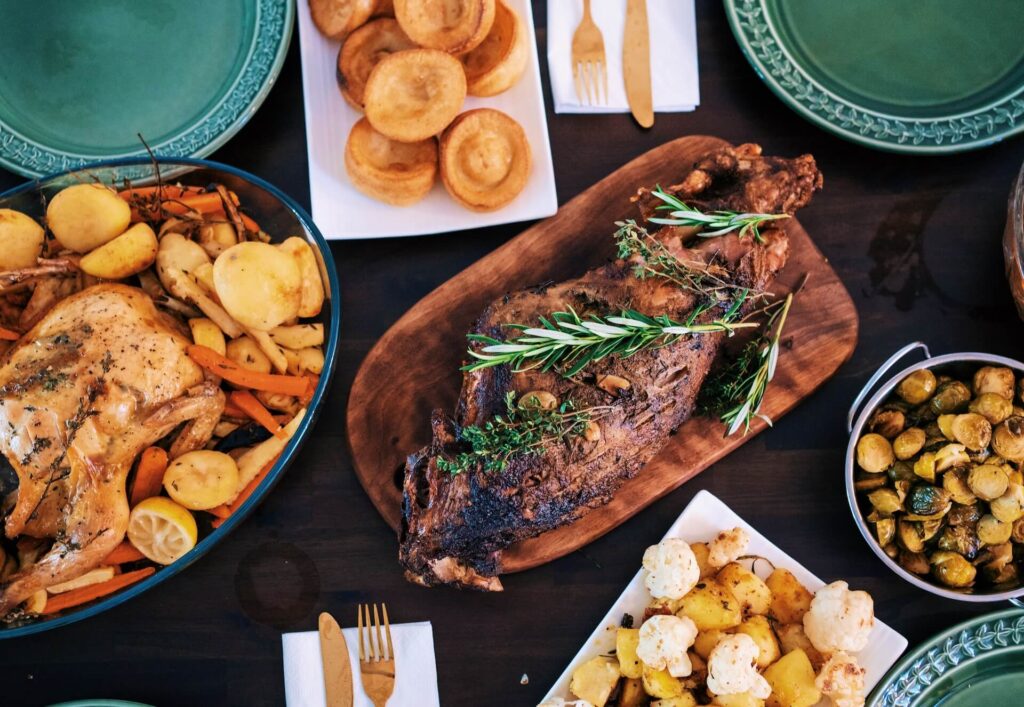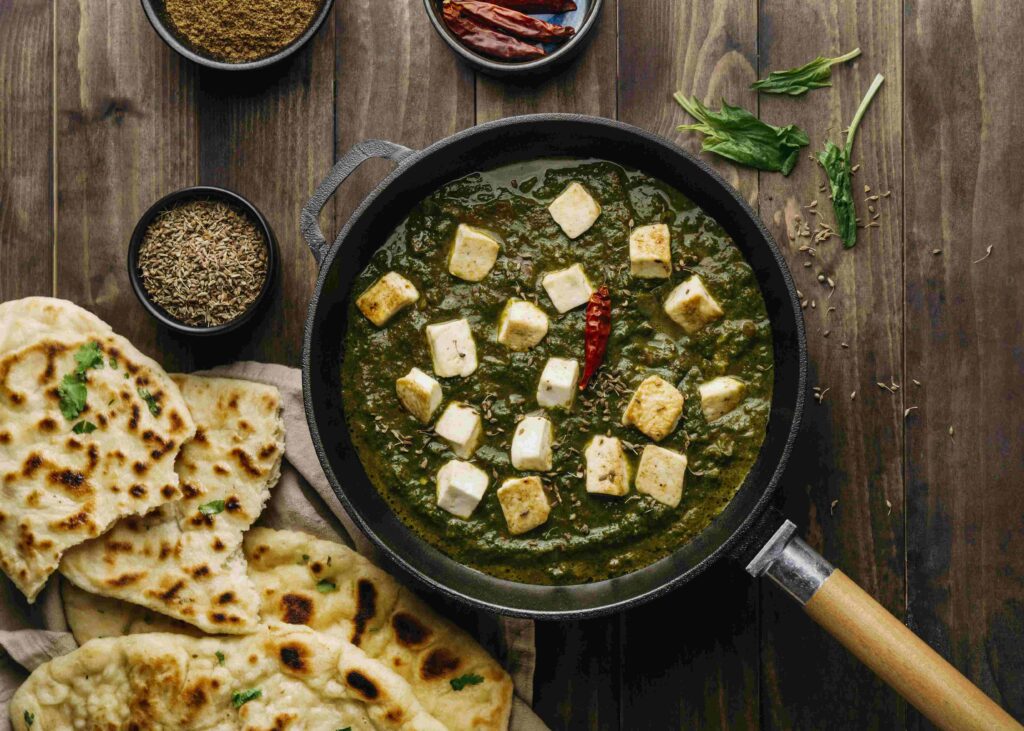
Introduction: Flavors of the World
Food is not just a basic necessity for survival; it is also an essential part of cultural identity and tradition. The flavors and ingredients used in cooking vary widely across the world, and exploring different cuisines can be a fascinating way to learn about diverse cultures and traditions. From spicy Thai curries to savory Italian pasta dishes, from the rich and aromatic flavors of Indian cuisine to the fresh and vibrant tastes of Mediterranean dishes, the world offers a vast array of culinary delights waiting to be discovered.
In this context, the concept of “Flavors of the World” represents an exciting and eye-opening adventure into the diverse world of food, offering opportunities to explore new tastes, expand culinary horizons, and gain insight into the rich cultural heritage of different regions and countries.
The history and evolution of different cuisines around the world
The history and evolution of different cuisines around the world is a vast and fascinating subject that can help us understand the cultural, social, and economic factors that have shaped our food preferences. Over time, food has been influenced by various factors, including geography, climate, trade, and migration. As a result, each cuisine has a unique history and story to tell.
For example, Mexican cuisine has its roots in the ancient Mayan and Aztec cultures, which relied heavily on corn, beans, and chilies. When the Spanish arrived in the 16th century, they introduced new ingredients such as rice, wheat, and dairy products. This fusion of indigenous and European ingredients and techniques resulted in the development of modern Mexican cuisine, with its complex and diverse flavors.
Similarly, French cuisine has a long and rich history, dating back to medieval times. French cuisine has been shaped by various cultural, social, and economic factors, including royal banquets, regional specialties, and the impact of foreign ingredients and techniques. Today, French cuisine is known for its emphasis on quality ingredients and meticulous preparation, with dishes such as coq au vin and ratatouille being popular all over the world.
Japanese cuisine is another example of cuisine with a unique and fascinating history. Japanese cuisine has its roots in ancient Japanese traditions and has been shaped by various factors, including Buddhist dietary laws, the introduction of new ingredients and cooking techniques from China, and the impact of Western food culture. Japanese cuisine is known for its emphasis on simplicity, freshness, and seasonality, with dishes such as sushi, tempura, and ramen being popular all over the world.
Indian cuisine has a rich history that dates back to ancient times. It was heavily influenced by the Mughal Empire, which brought Persian and Central Asian flavors to India. Over time, Indian cuisine has also been shaped by regional differences and religious practices, resulting in a wide range of distinct and flavorful dishes.
Italian cuisine has a long and storied history that has been shaped by various cultural influences. The Roman Empire had a significant impact on Italian cuisine, introducing dishes such as pasta and olive oil. In the Middle Ages, Italian cuisine was heavily influenced by Arabic cuisine, which brought flavors such as saffron and spices to the region. Today, Italian cuisine is known for its fresh ingredients, simple preparation techniques, and emphasis on regional specialties.
Chinese cuisine is another example of cuisine with a rich and complex history. It has been influenced by various factors, including geography, climate, and regional differences. Some of the key ingredients in Chinese cuisines, such as soy sauce and tofu, have been around for centuries, while others, such as chili peppers, were introduced relatively recently.
Cultural significance of food in different societies
The cultural significance of food in different societies is an essential aspect of anthropology, sociology, and history. Food is not only a source of nutrition and sustenance, but it is also a medium for expressing cultural identity, social status, and communal values. Food traditions and practices reflect the unique beliefs, customs, and practices of different societies, and studying these practices can help us gain a deeper understanding of the complex ways in which food shapes human life and culture.
In some societies, food is considered sacred and imbued with spiritual significance. This is true in many Native American cultures, where traditional foods such as corn, beans, and squash are revered as gifts from the creator. These foods are often prepared and consumed in ritual contexts, such as during powwows or other ceremonies.
In other societies, food is an essential part of social and cultural practices. For example, in Italy, the family meal is a central component of social life, and meals are often elaborate and long-lasting affairs that bring together family members and friends. Similarly, in Japan, the tea ceremony is a highly ritualized practice that involves the careful preparation and serving of tea, and it is an essential part of Japanese culture and identity.
Food can also be a means of expressing power and status in different societies. In ancient Rome, for example, lavish banquets were a way for the wealthy elite to display their wealth and social status, with exotic foods such as peacock and ostrich being served to impress guests. Similarly, in modern Western societies, fine dining and expensive restaurants are often seen as a status symbol and a way of displaying wealth and sophistication.

Exploring traditional cooking methods used in different parts of the world
Exploring traditional cooking methods used in different parts of the world can be an exciting and enlightening experience. Traditional cooking methods often reflect the unique cultural, environmental, and historical factors that have shaped a society’s food practices over time.
For example, in many African countries, cooking is often done over an open fire using a three-stone hearth. This cooking method has been used for centuries and requires minimal equipment, making it a practical choice in areas with limited resources. The use of open flames can also infuse food with a smoky flavor that is highly valued in many African cuisines.
In India, the tandoor oven is a traditional cooking method that has been used for thousands of years. This cylindrical oven is made of clay and is used to cook a variety of foods, including bread, meats, and vegetables. The tandoor oven can reach high temperatures, which allows food to cook quickly and gives it a distinctive smoky flavor.
In many Latin American countries, the use of the comal is a traditional cooking method that has been used for centuries. The comal is a flat, round griddle made of clay or metal and is used to cook tortillas, quesadillas, and other traditional foods. The comal is often heated over an open flame or on a stove, giving the food a crispy texture and a distinctive flavor.
Traditional cooking methods can also be found in many Asian cuisines. In Japan, for example, the use of the kamado, a traditional charcoal grill, is common for cooking a variety of foods, including meats, fish, and vegetables. The kamado’s high heat allows food to cook quickly and evenly, resulting in tender and flavorful dishes.

The role of spices and herbs in different cuisines and cultures
Spices and herbs play an essential role in the cuisine of different cultures around the world. They are not just used for flavor, but also for their medicinal and health properties. Here are some examples of how spices and herbs are used in different cultures:
- Indian cuisine is known for its use of aromatic spices, such as turmeric, cumin, coriander, and cardamom. These spices not only add flavor to dishes but also have anti-inflammatory and digestive properties.
- In the Middle East, sumac, cumin, and za’atar are commonly used spices. Za’atar is a blend of thyme, sesame seeds, and sumac that is used to season meats and vegetables.
- In Thai cuisine, lemongrass, galangal, and kaffir lime leaves are used to add flavor to curries and soups. These ingredients also have medicinal properties, such as reducing inflammation and aiding digestion.
- In Mexican cuisine, chili peppers are used to add spice and flavor to dishes, such as chili con carne and salsa. Cilantro is also a commonly used herb in Mexican cuisine, adding a fresh and citrusy flavor to dishes.
- In Italian cuisine, basil, oregano, and rosemary are popular herbs used to season dishes such as pasta sauces and pizza. These herbs also have medicinal properties such as antioxidant and anti-inflammatory effects.
Spices and herbs are not only used for flavor and medicinal properties but also for cultural and historical reasons. For example, in African cuisine, the use of spicy peppers is tied to cultural practices such as warding off evil spirits and protecting against diseases.
How different regions use ingredients in unique and creative ways
One of the fascinating aspects of exploring diverse cuisines around the world is discovering how different regions use ingredients in unique and creative ways. Here are some examples:
In Japan, the use of umami-rich ingredients such as seaweed, miso, and bonito flakes is integral to many traditional dishes, such as miso soup and dashi broth. These ingredients not only add depth and complexity to the dishes but also provide health benefits.
In South America, the use of corn is ubiquitous, and it is used in many different forms, such as tortillas, tamales, and arepas. Corn is also used to make chicha, a fermented drink that has been consumed since pre-Columbian times.
In the Middle East, pomegranate molasses is a common ingredient that is used to add a tangy and slightly sweet flavor to dishes such as salads and stews. It is also used to make a refreshing drink called sharbat.
In Thailand, green papaya is used to make a spicy and tangy salad called som tum. The unripe papaya is shredded and mixed with chili, lime, and fish sauce to create a refreshing and flavorful dish.
In West Africa, okra is used to thicken stews and soups, such as gumbo and jollof rice. It is also used to make a popular side dish called okra soup, which is often served with fufu or other starchy foods.
In Mexico, the use of chili peppers is integral to many traditional dishes, such as mole and salsa. There are many different types of chili peppers used in Mexican cuisine, each with its own unique flavor and heat level.
In India, spices such as cumin, coriander, and turmeric are used in many dishes, including curries and biryanis. These spices not only add flavor but also have medicinal properties.
In Italy, pasta is a staple ingredient and is used in many different dishes, such as spaghetti carbonara and lasagna. There are many different types of pasta, each with its own unique shape and texture.
In China, the use of soy sauce and fermented tofu is common in many dishes. These ingredients add a savory and umami flavor to dishes such as stir-fries and noodle soups.
In France, butter and cream are often used in cooking to add richness and flavor to dishes such as sauces and soups. Herbs such as thyme and rosemary are also commonly used in French cuisine.
These examples demonstrate how different regions use ingredients in unique and creative ways to create dishes that are flavorful, nutritious, and culturally significant. By exploring these culinary traditions, we can gain a deeper appreciation for the diversity of food cultures around the world.

The impact of immigration on cuisine and food culture in different countries
The impact of immigration on cuisine and food culture in different countries is significant, as it often leads to the fusion of different culinary traditions and the creation of new and unique dishes. Here are some examples of how immigration has influenced cuisine and food culture in different countries:
- In the United States, the influx of immigrants from different parts of the world has led to the development of a diverse food culture. For example, Italian immigrants brought pizza and pasta, while Mexican immigrants introduced tacos and burritos.
- In Australia, the influence of Asian immigrants has led to the popularity of dishes such as pho, ramen, and dumplings. Thai, Chinese, and Vietnamese cuisines have become particularly popular in recent years.
- In Canada, the influence of French and British cuisine can be seen in dishes such as poutine (French fries with gravy and cheese curds) and fish and chips. Immigrants from Asian and Middle Eastern countries have also introduced new flavors and ingredients to Canadian cuisine.
- In the United Kingdom, the influence of Indian and Pakistani immigrants has led to the popularity of dishes such as chicken tikka masala and biryani. Other immigrant communities, such as Chinese and Caribbean, have also had a significant impact on British cuisine.
- In Brazil, the influence of African, Portuguese, and indigenous cultures has led to the development of a unique cuisine that blends different culinary traditions. Dishes such as feijoada (a stew of beans and pork) and acarajé (a deep-fried bean and shrimp fritter) are examples of this fusion.
The influence of colonization on food culture and cuisine
The influence of colonization on food culture and cuisine is another important factor that has shaped the way people eat around the world. The impact of colonization can be seen in several ways, including the introduction of new ingredients and cooking techniques, the fusion of different culinary traditions, and the spread of certain foods and dishes to other parts of the world. Here are some examples of how colonization has influenced food culture and cuisine:
- The colonization of the Americas by European powers led to the introduction of many new ingredients to Europe, including potatoes, tomatoes, and corn. These ingredients soon became staples of European cuisine and helped to shape the way people eat around the world.
- The colonization of India by the British Empire had a significant impact on Indian cuisine. The British introduced many new ingredients, such as tea and potatoes, and encouraged the production of cash crops like opium. Indian cuisine also began to incorporate British ingredients and techniques, resulting in dishes like chicken tikka masala, which is a fusion of Indian and British culinary traditions.
- The colonization of Africa by European powers led to the introduction of new crops and food production methods, as well as the spread of certain foods and dishes to other parts of the world. For example, cassava, a staple food in many African countries, was introduced to Asia by Portuguese traders in the 16th century.
- The colonization of Southeast Asia by European powers had a significant impact on the region’s cuisine. The Portuguese, Dutch, and British introduced new ingredients and cooking techniques, leading to the fusion of different culinary traditions. For example, the Indonesian dish nasi goreng (fried rice) is believed to have been influenced by Chinese and Dutch cuisine.
- The colonization of the Pacific Islands by European powers also had a significant impact on food culture and cuisine. The introduction of new crops, such as taro and yams, led to the development of new dishes and cooking techniques. The spread of certain foods, such as breadfruit, to other parts of the world, also had a lasting impact on global cuisine.

The role of food in traditional celebrations and ceremonies
Food plays a significant role in traditional celebrations and ceremonies in many cultures around the world. It is often seen as a symbol of abundance, generosity, and hospitality, and is used to mark important milestones in life. Here are some examples of how food is used in traditional celebrations and ceremonies:
Weddings: In many cultures, weddings are marked by elaborate feasts and banquets. The food served often reflects the region’s local cuisine and is a symbol of the couple’s union. For example, in India, a traditional wedding feast may include dishes such as biryani, dal makhani, and paneer tikka.
Holidays: Holidays such as Christmas, Thanksgiving, and Eid al-Fitr are often celebrated with special meals and dishes. These meals often bring together family and friends and are a way of sharing traditions and cultural values. For example, in the United States, Thanksgiving is marked by a traditional meal of turkey, mashed potatoes, and pumpkin pie.
Religious Ceremonies: Many religious ceremonies involve the sharing of food as a symbol of unity and community. For example, in the Sikh tradition, the langar, or community kitchen, is a free meal served to all regardless of caste, gender, or religion. It is a symbol of the Sikh values of equality, service, and generosity.
Funerals: In many cultures, food is also an important part of funeral ceremonies. It is often seen as a way to comfort and support the grieving family and is a symbol of the community’s solidarity. For example, in the Southern United States, it is common for friends and family to bring food to the family of the deceased after a funeral.
Harvest Festivals: Harvest festivals are celebrated in many cultures around the world as a way of giving thanks for the bounty of the land. These festivals often involve the sharing of food and drinks and are a way of celebrating the community’s connection to the land. For example, in China, the Mid-Autumn Festival is marked by the sharing of mooncakes, a traditional pastry filled with sweet or savory fillings.
Health benefits of different cuisines and traditional dishes
Different cuisines and traditional dishes are not only delicious but can also provide numerous health benefits. Here are some examples of how different cuisines can promote health and well-being:
Mediterranean Cuisine: The Mediterranean diet is rich in fruits, vegetables, whole grains, legumes, and lean protein sources such as fish and poultry. Studies have shown that this diet can reduce the risk of heart disease, stroke, and certain types of cancer. The high consumption of olive oil and nuts, as well as the low intake of red meat, is thought to contribute to these health benefits.
Japanese Cuisine: Traditional Japanese cuisine is based on the principles of balance, variety, and moderation. It typically includes fish, vegetables, rice, and soy products such as tofu. Studies have shown that the Japanese diet can lower the risk of heart disease, stroke, and certain types of cancer. The high consumption of fish and soy products, as well as the low intake of saturated fat, is thought to contribute to these health benefits.
Indian Cuisine: Indian cuisine is rich in spices and herbs that have been used for centuries for their medicinal properties. For example, turmeric, a spice commonly used in Indian cuisine, has anti-inflammatory properties and may help reduce the risk of heart disease, Alzheimer’s disease, and certain types of cancer. The high consumption of legumes and vegetables, as well as the use of spices and herbs, is thought to contribute to these health benefits.
Mexican Cuisine: Traditional Mexican cuisine includes a variety of colorful fruits and vegetables, legumes, and lean protein sources such as chicken and fish. Studies have shown that the consumption of chili peppers, a common ingredient in Mexican cuisine, can lower blood pressure and cholesterol levels. The high consumption of vegetables and legumes, as well as the use of chili peppers, is thought to contribute to these health benefits.
Greek Cuisine: Greek cuisine is based on the Mediterranean diet and includes a variety of fruits, vegetables, whole grains, legumes, and lean protein sources such as fish and poultry. Studies have shown that the consumption of Greek yogurt, a common ingredient in Greek cuisine, can improve gut health and reduce the risk of chronic diseases such as heart disease and type 2 diabetes. The high consumption of fruits, vegetables, and whole grains, as well as the use of olive oil and nuts, is thought to contribute to these health benefits.

Importance of family recipes in preserving cultural heritage
Family recipes are a powerful way of preserving cultural heritage, as they are often passed down through generations and are closely tied to a family’s traditions and history. These recipes can offer insights into the cultural practices and beliefs of a particular group and can help to keep these traditions alive for future generations.
Family recipes often carry a lot of emotional significance as well, as they are often associated with memories of loved ones and important events. Cooking and sharing these dishes can help to connect individuals to their family history and cultural identity, and can be an important way of maintaining family bonds.
In many cultures, family recipes are kept secret and are only shared with close family members. This secrecy helps to protect the uniqueness and authenticity of the dish and can be seen as a way of safeguarding cultural traditions.
However, the importance of family recipes goes beyond simply preserving cultural heritage. Cooking and sharing food can be a powerful way of building community and fostering connections between people from different backgrounds. By sharing family recipes with others, individuals can help to spread awareness and appreciation for their culture and can promote cultural exchange and understanding.

Culinary tourism and its impact on local communities
Culinary tourism is a growing trend in the travel industry, where tourists seek out destinations specifically for their unique cuisine and food experiences. This type of tourism not only offers visitors a chance to taste new and exotic flavors, but it also has the potential to positively impact local communities and economies.
One of the main ways that culinary tourism benefits local communities is through the promotion and preservation of culinary traditions. As tourists seek out authentic food experiences, local chefs and restaurateurs are incentivized to continue using traditional recipes and cooking techniques. This not only helps to preserve cultural heritage, but it also supports local farmers, fishermen, and other food producers who supply the ingredients for these traditional dishes.
In addition, culinary tourism can have a significant economic impact on local communities. As tourists spend money on food and drink, they are supporting local businesses and creating job opportunities for residents. In some cases, culinary tourism has even led to the development of new food-related businesses, such as cooking schools, food tours, and specialty food shops.
However, there are also potential negative impacts of culinary tourism on local communities. For example, if the demand for certain foods or ingredients outstrips the local supply, it can lead to overfishing, deforestation, or other unsustainable practices. Additionally, if tourists only visit high-end restaurants or tourist-oriented food stalls, it may not benefit the local community as much as it could.
To address these concerns, it is important for culinary tourism to be conducted in a responsible and sustainable way. This means promoting local and seasonal ingredients, supporting small-scale food producers, and respecting local culinary traditions and customs. When done responsibly, culinary tourism can have a positive impact on both tourists and local communities, creating a more sustainable and equitable food system for all.
Conclusion
Exploring the diverse cuisines and traditions of the world is a fascinating journey that can teach us so much about different cultures, history, and people. From the traditional cooking methods used in different parts of the world to the role of spices and herbs in different cuisines and cultures to the significance of street food and family recipes in preserving cultural heritage, there is so much to discover and learn.
As we have seen, food plays a significant role in different societies, serving as a reflection of their history, values, and social norms. It is not just about nourishment and sustenance, but also about identity and community. Through food, we can better understand and appreciate the diversity of human experiences and connect with people from different backgrounds and walks of life.
Moreover, culinary tourism offers an exciting opportunity to not only taste new and exotic flavors but also to support local communities and economies. When conducted in a responsible and sustainable way, culinary tourism can promote culinary traditions, support local food producers, and create job opportunities for residents.
In conclusion, exploring the flavors of the world is not just about satisfying our taste buds, but also about broadening our horizons and deepening our understanding of the world around us. By embracing the diversity of cuisines and traditions, we can celebrate the richness of human culture and create a more connected and compassionate world.
Read more articles here.





